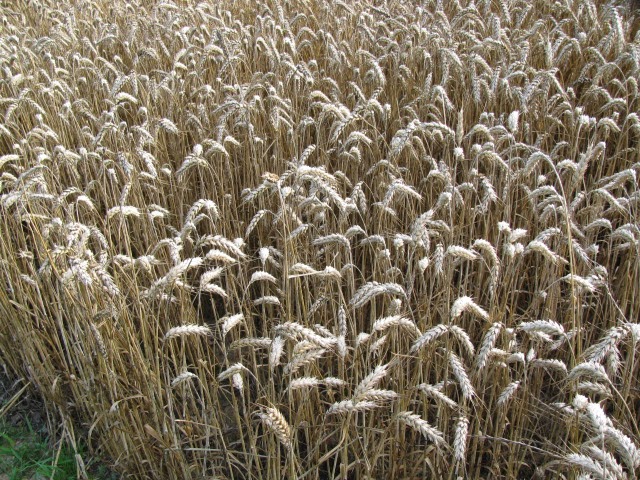So this small corner patch of the wheat field is on my side of the property line.
The ripe wheat is ready to harvest -- I think? How do you know?
There are 2 ways to know when to harvest.
You pluck off a head of wheat from a stalk.......
.....and you rub it briskly between your palms......
....and blow away the chaff and then chew on a wheat kernel to see if it is dry enough.
......or......
you just wait until your neighbor shows up with this behemoth combine to harvest the wheat in the main field right on the other side of the fence. That's when you harvest your little patch.
So we hand cut about a 3rd of the wheat and threshed it by beating bundles of the stalks against the inside of a new, clean galvanized trash can. Then we removed all the chaff by pouring the wheat from a pan in front of a box fan. The wheat chaff blew away into the yard and the clean wheat kernels fell onto a tarp spread on the ground. We got about 40 pounds of wheat kernels that way. We expected the total we would get our patch would be about 100 to 120 lbs, but then we discovered why the wheat had been harvested the day it was. Oh, it was dry and ready to harvest, but more importantly it rained heavily the next day knocking all the remaining standing wheat kernels to the ground. Oh well, it was fun while it lasted.
No I didn't buy a $200, or $400 or $1,000 mill to make $20 worth of flour. We used the wheat as part of a cover crop mix with clover to plant in idle parts of the garden.






No comments:
Post a Comment